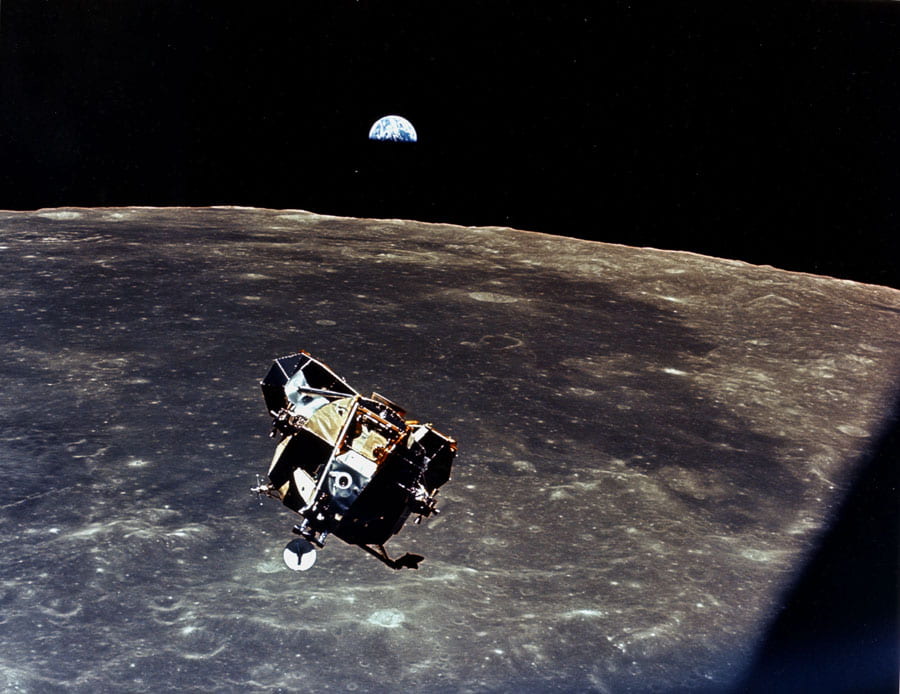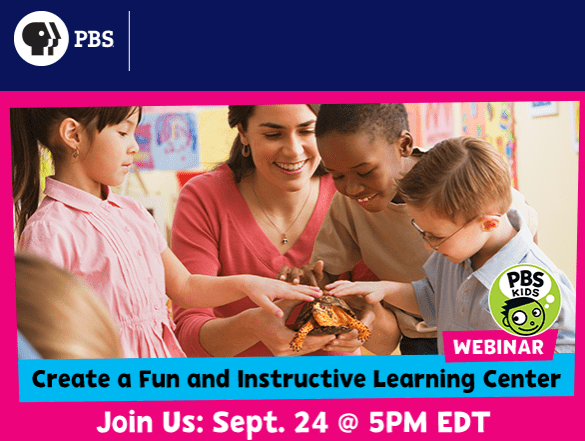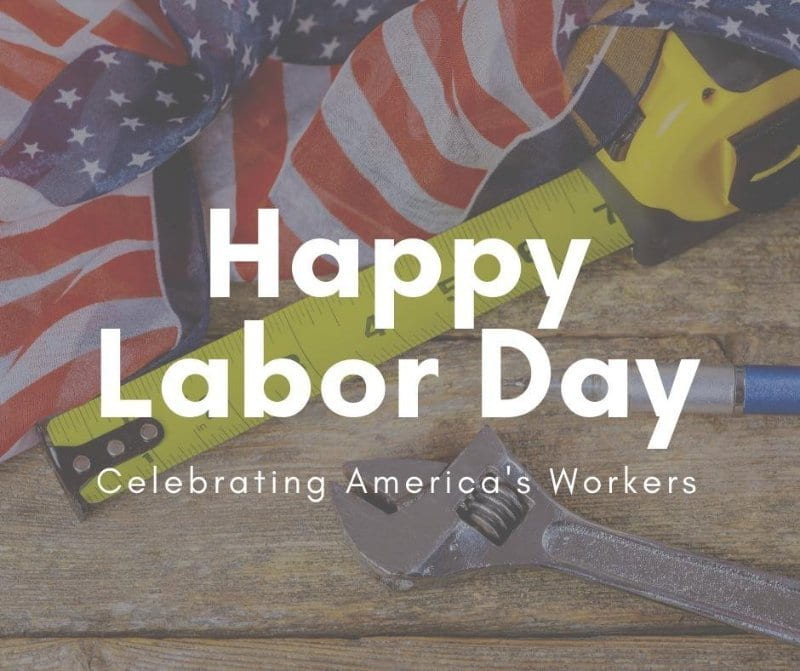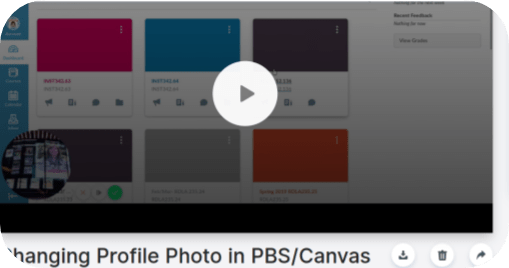Moon Landing 50th Anniversary Announcement – July 20th
Today, July 20th at 3:17 pm Eastern Time, take a look at the sky and find the moon. On this day, in 1969 the Apollo 11 lunar module called “Eagle” landed on the moon, in an area of the moon known as the Sea of Tranquility. It took The crew three days to travel and reach the moon. Then the lunar module, named the Eagle disengaged from the command module of Apollo 11.

Caption from NASA.gov- From the Moon to the Earth Credit: Apollo 11, NASA. After the most famous voyage of modern times, it was time to go home. After proving that humanity has the ability to go beyond the confines of planet Earth, the first humans to walk on another world — Neil Armstrong and Buzz Aldrin — flew the ascent stage of their Lunar Module back to meet Michael Collins in the moon-orbiting Command and Service Module. Pictured above on July 21 1969, the ascending spaceship was captured by Collins making its approach, with the Moon below, and Earth far in the distance. Link: https://apod.nasa.gov/apod/ap090719.html
Here’s what I’ve learned from the PBS American Experience special called “Chasing the Moon” and the History Channel’s Moon Landing: The Lost Tapes.
Average age of the officers manning the consoles at Mission Control was 29 years old. The Eagle orbit took it to the far side of the moon and for 45 minutes Mission Control and the world will have no contact with Astronauts Armstrong and Aldrin.
Astronaut Neal Armstrong landed the lunar module with just 17 seconds of fuel left: 17 seconds!! The crew’s onboard guidance computer system on had half the memory of a an original GameBoy.
Neal Armstrong’s 1st words were, “One small step for a man; One giant leap for mankind.”
Astronaut Neil Armstrong told Houston Space Command Center, “There seems to be no difficulty moving around as we suspected. It’s even perhaps easier than the simulations in 16G that we performed in various simulations on the ground. I’ll step down and take some of my 1st pictures here. … It (the moon’s surface) has a stark beauty all its own. It’s much like the high desert of the United States. It’s very pretty.”
Astronaut Buzz Aldrin described the Moon as “magnificent desolation.”
Astronauts Armstrong and Aldrin spent 21 hours, 36 minutes on the moon including their 2-½ hour moon walk. Congress passed a resolution to plant the U.S. flag on the moon. This flag was part of set purchased at Sears by a trio of NASA secretaries who had been sent out on their lunch hour.
A plaque was left on the landing gear of the lunar module. Also, a silicon “Memorial Disc” inscribed with goodwill messages from 73 nations around the world was left on the moon.Astronauts Armstrong and Aldrin spent 21 hours, 36 minutes on the moon including their 2-½ hour moon walk. Congress passed a resolution to plant the U.S. flag on the moon. This flag was part of set purchased at Sears by a trio of NASA secretaries who had been sent out on their lunch hour.

A plaque was left on the landing gear of the lunar module. Also, a silicon “Memorial Disc” inscribed with goodwill messages from 73 nations around the world was left on the moon.
There was a momentary sense of community all around the world. On that day ½ billion people around the world watched the landing and subsequent moon walks by Neal Armstrong and Buzz Aldrin. The third member of the team, Astronaut Michael Collins remained in the Apollo 11 spacecraft.
President Nixon called the astronauts via Houston Command Center. He remains the only President to call the moon!
The New York Times used the largest typeface font that they ever used to herald the achievement. Most newspapers had two different newspaper frontpages ready- one for the successful return of Apollo 11 and one if they were unable to reenter.
The world held its collective breath during Apollo 11’s return trip during the communications blackout that the spaceship encountered. The communications blackout was approximately three minutes long. A sonic boom sounded Apollo 11’s successful re-entry and approach to the Pacific Ocean.
The LUNA 15, a spaceship built by the U.S.S.R. plunged to the moon at 300 mph in a crash landing the next day. Ironically, the LUNA 15 crashed in the area of the moon known as the “Sea of Crisis.”
It truly was a space race!
In a protective measure that only TV detective Adrian Monk would applaud, the astronauts had to be in isolation 21 days after they landed to make sure that they did not bring back any moon germs. Their quarantine facility was located in Houston, Texas.
Over 400,000 people worked to design, test, and support the Apollo 11 mission. Almost immediately, the engineers and technical personnel in the Apollo program began getting pink slips which met imminent layoffs. Most of these professionals went into the computer fields, robotics, nanotechnology, and all fields associated with technology. There are currently 16 man-made machines flying over or operating on Mars.
During the world-wide celebratory tour afterward, Astronaut Neil Armstrong recalled, “{The Earth} looked like an oasis in the heavens and we thought it was very important for us and men everywhere to save that planet as a beautiful oasis that we together can enjoy for all the future,”
Astronaut Buzz Aldrin would later remember that the most often asked question was “What did it feel like?”
So look up in the sky today at 3:17pm and imagine what it would feel like to land and walk on the moon! Relive the Apollo 11 Moon Landing Mission in Real Time As It Happened! link: http://dlvr.it/R8Vj91) dlvr.it/R8Vj91
Learn more and tweet your thoughts at the #Apollo11 hashtag
**3.61 billion people on Earth as of Dec. 31, 1969 / 7.7 billion in 2019
None of the astronauts had life insurance; they left behind Apollo 11 envelopes with a sign postcard with their signatures on it so their wives could at least have some security.
https://www.nbcnews.com/mach/science/apollo-11-eleven-things-you-never-knew-about-nasa-s-ncna1027531









